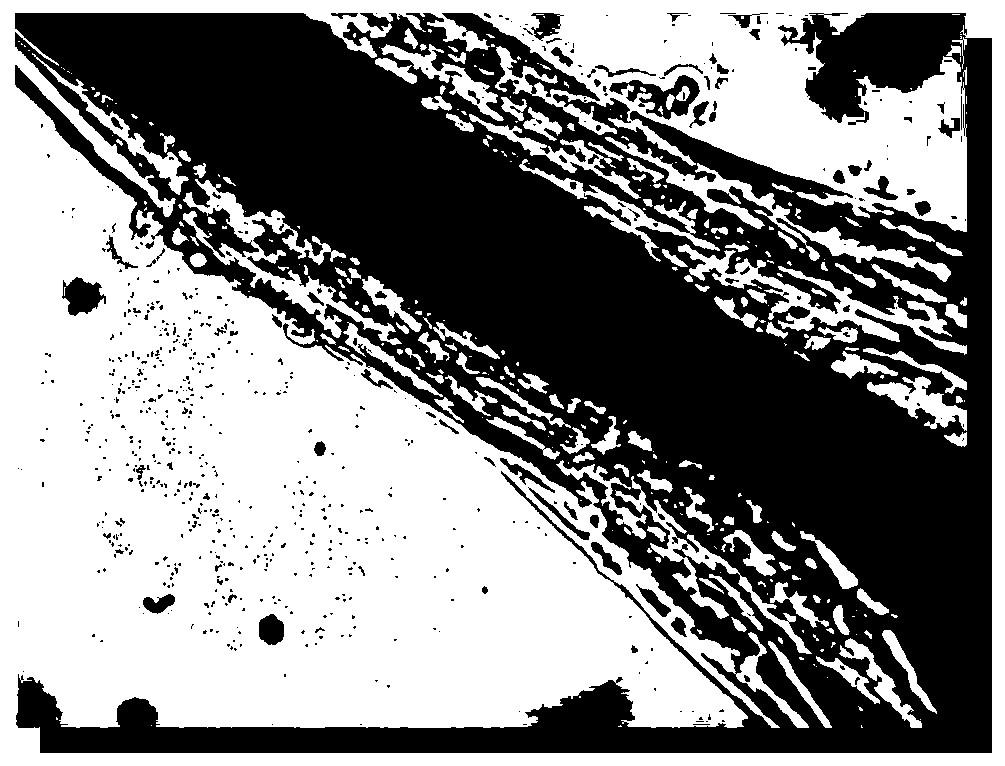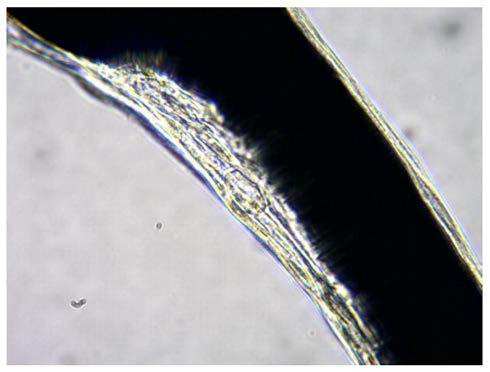Stem cell scaffold for treating aneurysm and vascular stenosis based on alloy core, and preparation method of stem cell scaffold
A technology for vascular stenosis and aneurysm, which is applied in the field of stem cell scaffolds for the treatment of aneurysms and vascular stenosis and its preparation method, which can solve the problems of difficult cell colonization and achieve the effect of convenient colonization and high loading rate
- Summary
- Abstract
- Description
- Claims
- Application Information
AI Technical Summary
Problems solved by technology
Method used
Image
Examples
Embodiment 1
[0033] This embodiment provides an alloy scaffold with a high cell loading rate. The alloy scaffold with a high cell loading rate is processed by the alloy metal scaffold through the following steps:
[0034] Dip the alloy metal stent into a gelatin solution with a concentration of 0.5%, let it stand at room temperature for 4 hours, and air-dry it at room temperature;
[0035] Immerse the air-dried alloy metal stent in a polylysine solution with a concentration of 0.5%, let it stand at room temperature for 1 hour, and air-dry it at room temperature;
[0036] Immerse the above air-dried alloy metal stent in a mixed solution containing fibronectin and laminin, the concentrations of both fibronectin and laminin are 0.5%, and let it stand at room temperature for 4 hours to obtain an alloy with a high cell loading rate bracket;
[0037] Among them, the alloy metal stent was purchased from Johnson & Johnson Cordis Company.
Embodiment 2
[0039] This embodiment provides an alloy scaffold with a high cell loading rate. The alloy scaffold with a high cell loading rate is processed by the alloy metal scaffold through the following steps:
[0040] Immerse the alloy metal stent in a gelatin solution with a concentration of 1%, let it stand at room temperature for 6 hours, and air-dry it at room temperature;
[0041] Immerse the air-dried alloy metal stent in a polylysine solution with a concentration of 1%, let it stand at room temperature for 2 hours, and air-dry it at room temperature;
[0042] Immerse the above air-dried alloy metal stent in a mixed solution containing fibronectin and laminin, the concentrations of both fibronectin and laminin are 1%, and let it stand at room temperature for 5 hours to obtain an alloy with a high cell loading rate bracket;
[0043] Among them, the alloy metal stent was purchased from Johnson & Johnson Cordis Company.
Embodiment 3
[0045] This embodiment provides an alloy scaffold with a high cell loading rate. The alloy scaffold with a high cell loading rate is processed by the alloy metal scaffold through the following steps:
[0046] The alloy metal stent was immersed in a gelatin solution with a concentration of 1.5%, placed overnight at 4°C, and air-dried at room temperature;
[0047] Immerse the air-dried alloy metal stent in a polylysine solution with a concentration of 1.5%, let it stand at room temperature for 3 hours, and air-dry it at room temperature;
[0048] Immerse the above air-dried alloy metal scaffold in a mixed solution containing fibronectin and laminin, the concentrations of both fibronectin and laminin are 1.5%, and place it at 4°C overnight to obtain a high cell loading rate alloy bracket;
[0049] Among them, the alloy metal stent was purchased from Johnson & Johnson Cordis Company.
PUM
 Login to View More
Login to View More Abstract
Description
Claims
Application Information
 Login to View More
Login to View More - R&D
- Intellectual Property
- Life Sciences
- Materials
- Tech Scout
- Unparalleled Data Quality
- Higher Quality Content
- 60% Fewer Hallucinations
Browse by: Latest US Patents, China's latest patents, Technical Efficacy Thesaurus, Application Domain, Technology Topic, Popular Technical Reports.
© 2025 PatSnap. All rights reserved.Legal|Privacy policy|Modern Slavery Act Transparency Statement|Sitemap|About US| Contact US: help@patsnap.com



